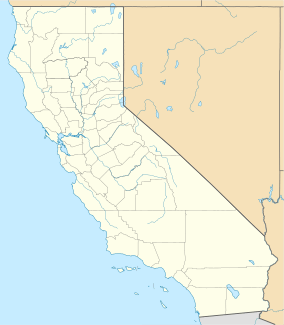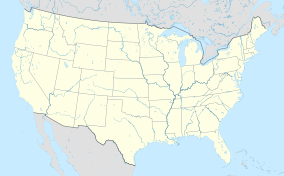Carnegie State Vehicular Recreation Area facts for kids
Quick facts for kids Carnegie State Vehicular Recreation Area |
|
|---|---|
| Location | Alameda and San Joaquin Counties, California, USA |
| Nearest city | Tracy, California |
| Area | 5,075 acres (2,054 ha) |
| Established | 1979 |
| Governing body | California Department of Parks and Recreation |
Carnegie State Vehicular Recreation Area (SVRA) is a super fun state park in California, USA. It's a special place where you can ride off-road vehicles like motorcycles and ATVs! This park is located in the Diablo Range, across parts of Alameda and San Joaquin counties.
Carnegie SVRA is one of eight state parks just for off-road riding. It has all kinds of land, from gentle hills to steep canyons. This makes it a perfect spot for riders of all skill levels to have an exciting adventure!
Contents
The Story of Carnegie Brick and Pottery
Long ago, in 1855, people found coal in a place called Corral Hollow. Later, they also discovered lots of clay there. Because California was growing fast, people needed many building materials. So, in 1902, a company called Carnegie Brick and Pottery was started. It was named after a famous businessman, Andrew Carnegie.
By 1904, a busy town named Carnegie, California grew up around the factory. About 350 people lived there! The factory was huge, making over 100,000 bricks every single day. But even with so much demand, the company faced problems. Floods and boiler explosions caused big financial trouble.
In 1916, the company was sold. The new owners decided to remove the factory's machines and even destroyed the town's buildings. Soon, the town of Carnegie was just a memory. Today, you can still see parts of the old factory's foundations east of the ATV track. They are a cool reminder of the past!
Carnegie Becomes a State Park
For many years after the factory closed, the land was used for raising cattle. It also became a popular spot for picnics for families from nearby Livermore and Tracy. People started riding off-road vehicles here in the 1930s and 1940s. By the 1950s, they were even holding races!
In the 1960s, a private park called Carnegie Cycle Park opened. It was a great place for motorcyclists to practice their off-road skills. As off-road riding became more popular, the state of California bought the land in 1979. They used special funds to create the Carnegie State Vehicular Recreation Area we know today!
Riding Areas and Facilities
Carnegie SVRA has over 1,500 acres (610 ha) of land for riding. The park has many different types of terrain. You'll find dry, rocky paths, rolling hills, and steep, rugged canyons. This means there's something for every off-highway vehicle rider, no matter their skill level.
The park is usually open from 8 a.m. until sunset, but hours can change with the seasons. If you want to stay longer, there are 23 campsites available. They are given out first-come, first-served. Campers can use picnic shelters, fire rings, restrooms, and water faucets. Just remember, there are no hook-ups for water or electricity. You'll also find picnic tables scattered across the valley floor. Fires are only allowed in the fire rings at the campground.
Park staff manage several cool tracks that are open to everyone, unless there's a special event:
- Motocross Track: This track is super popular and only for motorcycles. Sometimes, races are held here, so it might be closed to the public.
- ATV/MC Track: This track is open for both ATVs and motorcycles.
- 70cc Children's Track: This track is just for young riders! It's for motorcycles and ATVs with small engines (up to 70cc). It's a great place for kids to practice and get better at riding.
- 110cc Beginner Track: Another track for young riders, this one is for motorcycles and ATVs with engines up to 110cc. It also helps young riders improve their skills.
Amazing Plants and Animals
Carnegie SVRA is home to many different kinds of plants and animals. If you take time to look around, you'll see amazing things! You might spot large birds called raptors flying high above. You'll also see countless tracks left by small mammals and insects. In the spring, the park bursts with a beautiful, colorful display of wildflowers.
Look up, and you might see a red-tailed hawk, a kestrel, or even a golden eagle soaring. They are often searching the grasslands below for their next meal. Wow!
You can often see Black-tailed deer eating in the mornings and evenings. Seeing a coyote is also quite common. Sometimes, visitors get a special thrill if they spot Tule elk. These large animals were brought to the Diablo Range in the late 1970s. They can be seen grazing in the park or on nearby ranch land. Other animals that call Corral Hollow Canyon home include wild pigs, wild turkeys, bobcats, and badgers.
The plants in the park are important to protect. Some native plants you might recognize are blue oak trees and gray pine trees. You'll also see bright California poppies and California buckeye trees. Be careful of poison oak, which is also common here. Like most grasslands in California, many of the grasses in the park are not native. They were brought here during the many years of ranching and farming. However, Carnegie does have some beautiful areas with native bunchgrasses.
Protecting the Park's Nature
Park staff at Carnegie SVRA work hard to protect the environment. They constantly check the soil, wildlife, and plants. This helps them make sure the park is meeting its goals for protecting habitats and preventing soil loss. By watching these things, they can spot problems like erosion or changes in animal populations. Then, they can take action to fix them.
Sometimes, certain trails or hill climbing areas might be fenced off or closed. This is done to protect animals and help nature recover. These closed areas are often replanted with native plants. This helps to repair and restore areas that have been damaged by recreational use.
In 1998, over 3,000 acres (1,200 ha) of land west of the current riding area was bought by the state. This new area is called the Alameda-Tesla Expansion Project. It will add even more off-highway vehicle (OHV) riding opportunities at Carnegie SVRA. This might include a large trail system for motorcycles, ATVs, and 4x4 vehicles. There could also be a 4x4 vehicle obstacle course and new areas for day-use.
The project might also offer other fun activities that don't involve OHVs. These could include special trails to learn about nature, mountain biking, horseback riding, and hiking. These activities will only be added if they don't cause problems for the OHV riders. This new area also includes the site of the old coal mining town of Tesla.



